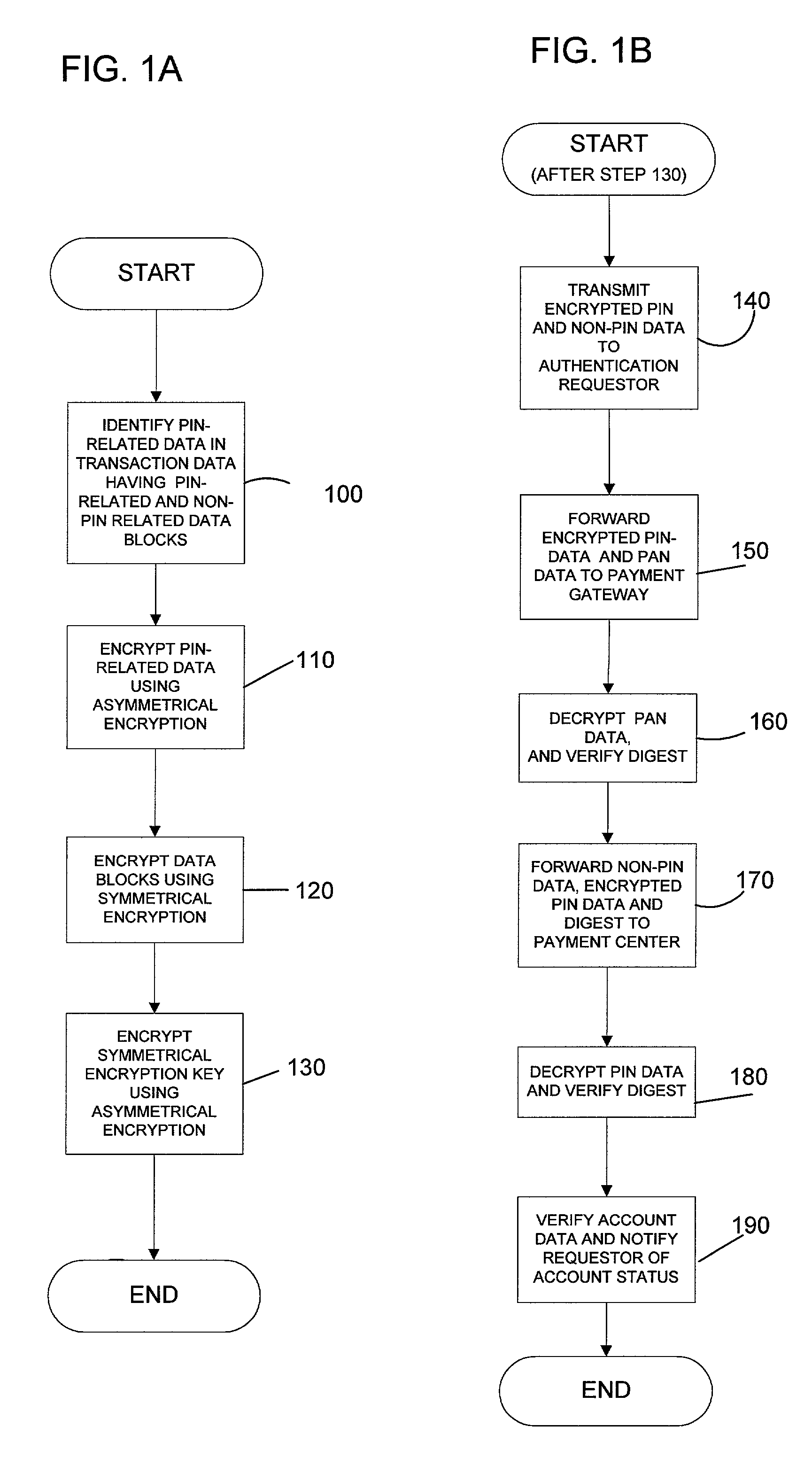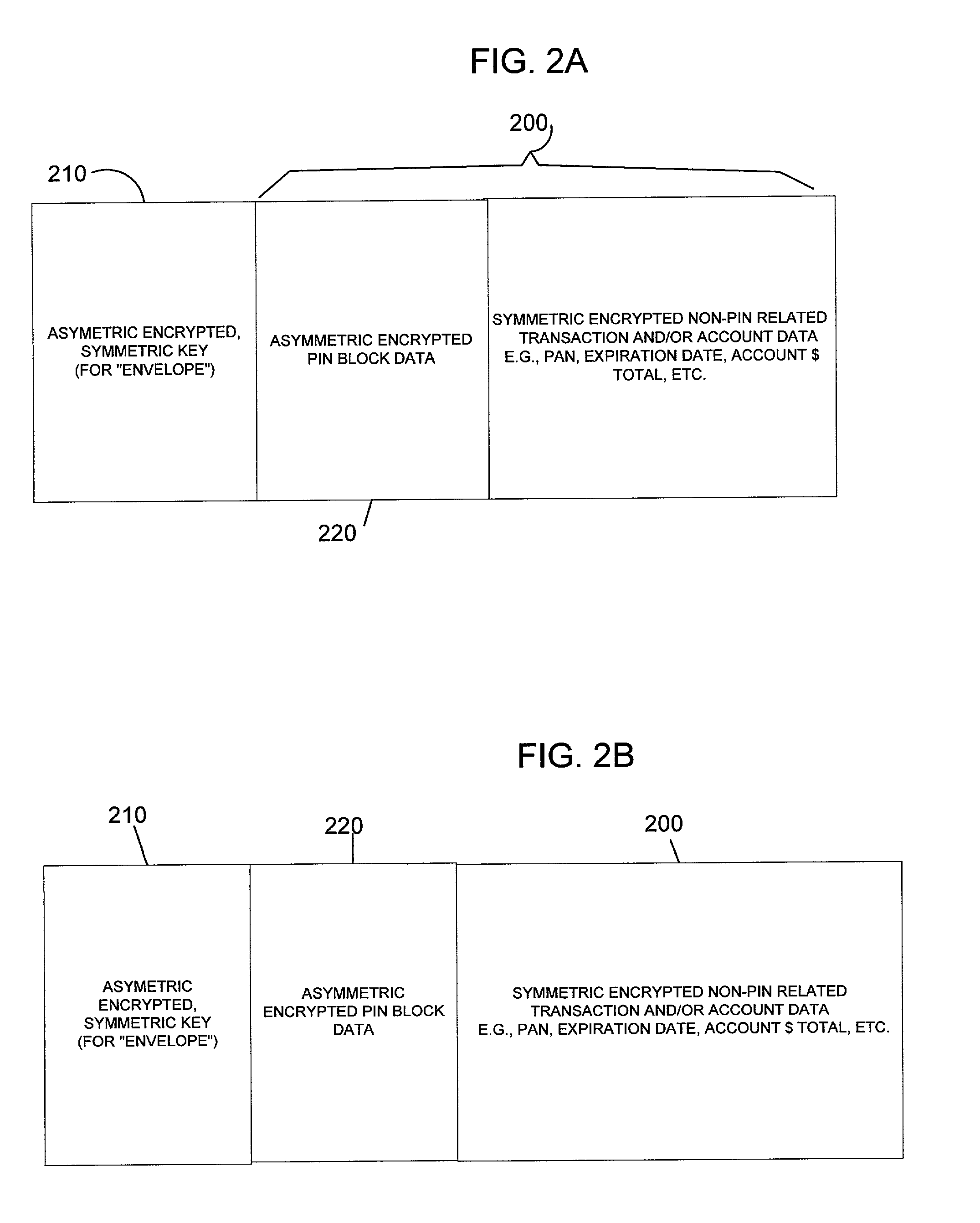Asymmetric encrypted pin
a technology of encrypted pins and symmetric encryption, applied in the field of secure electronic transactions, can solve the problems of financial information required to perform a transaction, subject to intercept and misuse by unauthorized third parties, unscrupulous merchants or employees, etc., and achieve the effect of improving security and electronic transactions, secure and efficien
- Summary
- Abstract
- Description
- Claims
- Application Information
AI Technical Summary
Benefits of technology
Problems solved by technology
Method used
Image
Examples
Embodiment Construction
[0030]In systems and methods for conducting secure electronic transactions, various data is exchanged between a customer, a merchant and a payment center. Included in this data is financial data related to an account from which funds will be drawn to pay for the transaction. The data includes account related information as well as PIN related data. To maintain the security of the account, it is advantageous to separately encrypt the PIN related data for any other account data.
[0031]The present invention relates to a multi-tiered encryption method which separately encrypts PIN and PIN-related data (hereinafter all PIN and PIN related data is referred to as “PIN data blocks”) in a separate manner than the remaining account data and other transaction data. PIN related data can include a PIN offset for encryption purposes, information linked to the PIN or other related data. The term PIN in this application includes numeric, alphanumeric and other combinations of characters which serve ...
PUM
 Login to View More
Login to View More Abstract
Description
Claims
Application Information
 Login to View More
Login to View More - R&D
- Intellectual Property
- Life Sciences
- Materials
- Tech Scout
- Unparalleled Data Quality
- Higher Quality Content
- 60% Fewer Hallucinations
Browse by: Latest US Patents, China's latest patents, Technical Efficacy Thesaurus, Application Domain, Technology Topic, Popular Technical Reports.
© 2025 PatSnap. All rights reserved.Legal|Privacy policy|Modern Slavery Act Transparency Statement|Sitemap|About US| Contact US: help@patsnap.com



